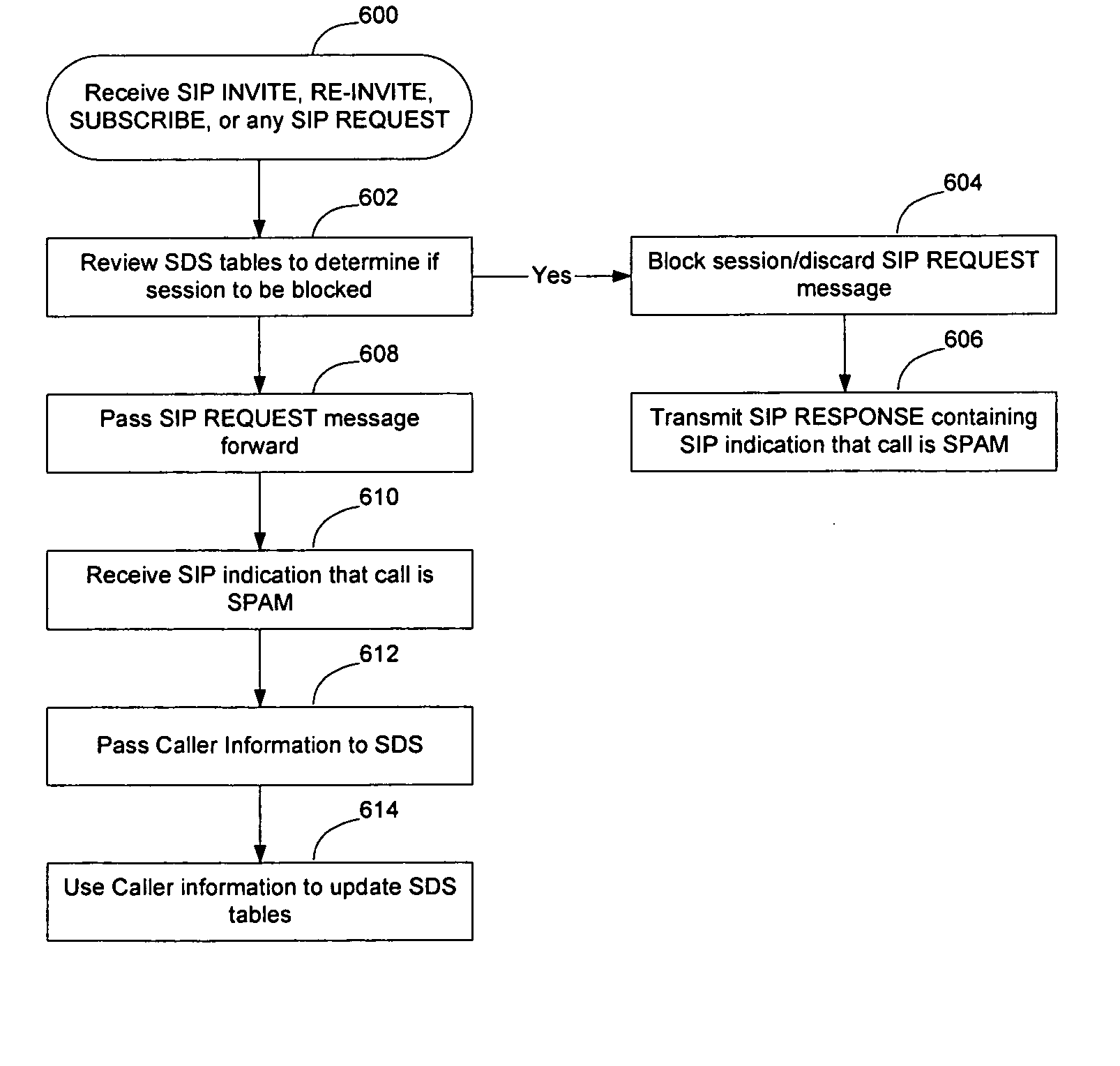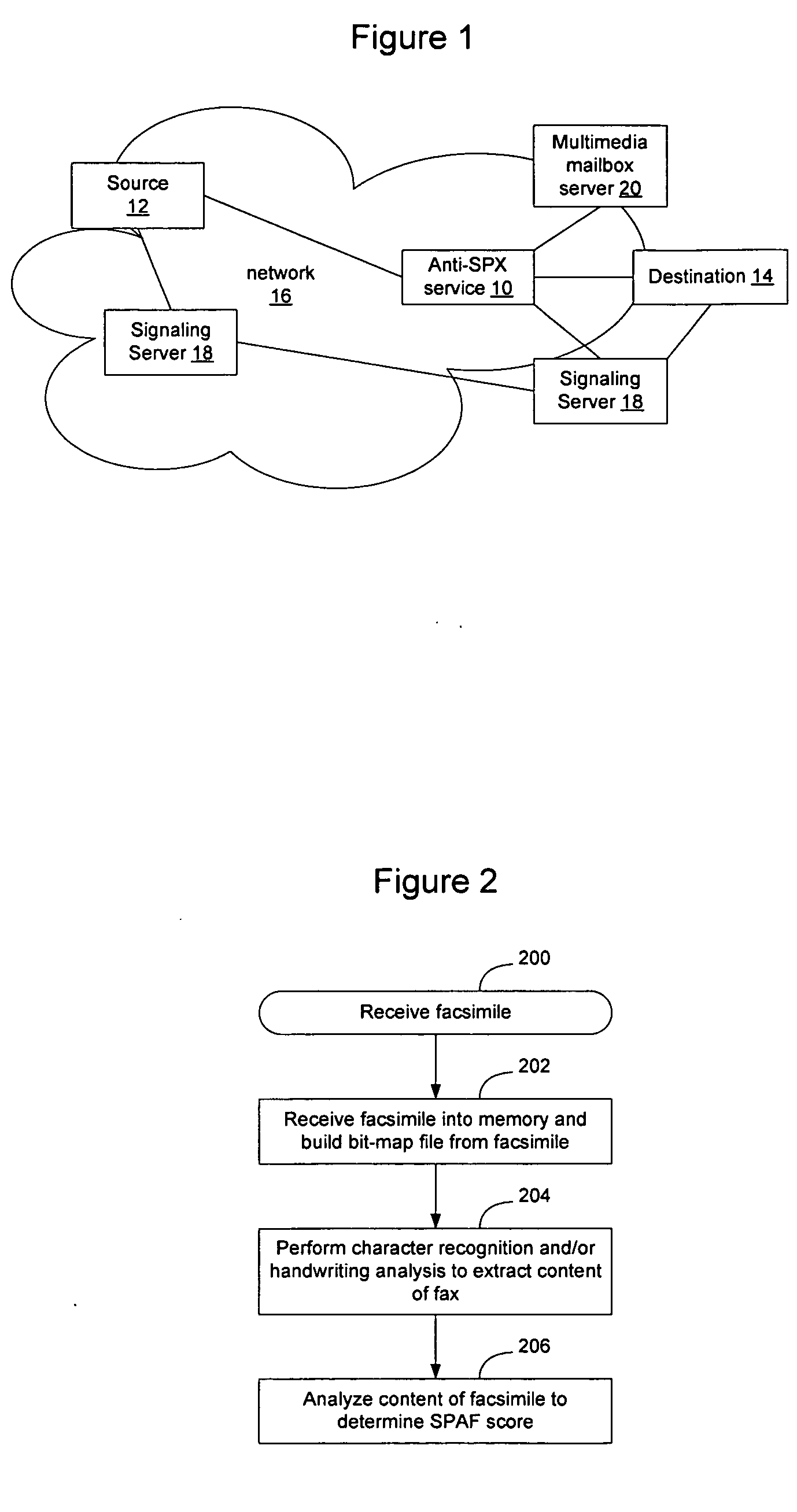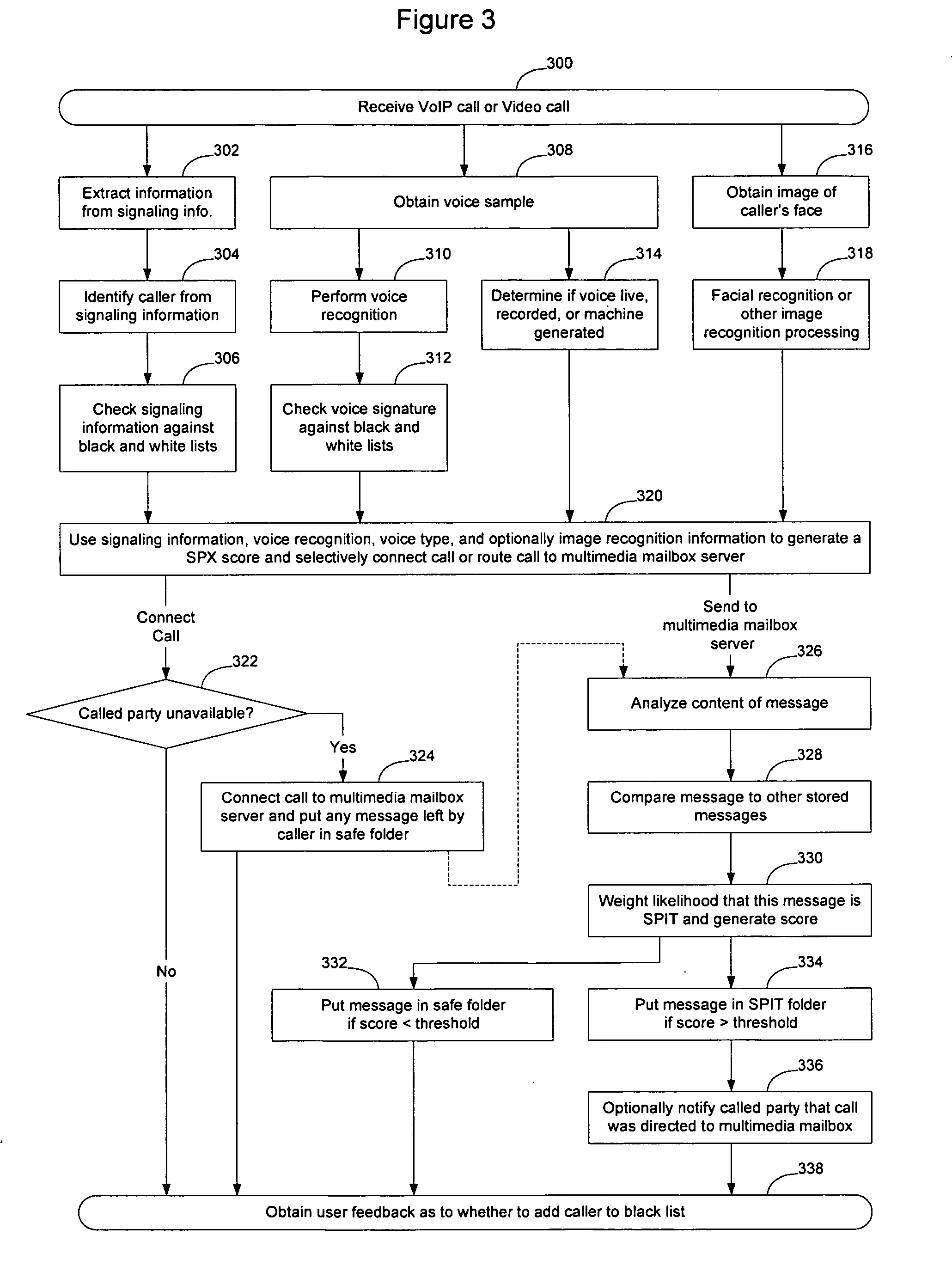Extensions to SIP signaling to indicate SPAM
a technology of sip signaling and spam, applied in the field of communication networks, can solve the problems of potentially presenting a new problem, spam over internet telephony (spit) is likely to be more intrusive, and the internet telephony may potentially be abused in the futur
- Summary
- Abstract
- Description
- Claims
- Application Information
AI Technical Summary
Problems solved by technology
Method used
Image
Examples
example 1
[0071] When a session request is not detected as SPAM by the SPAM Detection Service (SDS) described above in connection with FIGS. 1-3, the called person (callee) may answer a SPAM telephone call and realize that the call is unsolicited. After having realized that the session was a SPAM session, the person that was called may decide to terminate the session by pressing a button, key combination, or otherwise providing an indication to cause the equipment that is being used by the person to signal that the session is SPAM. The feedback may be sent to the SDS and used by the SDS system in connection with establishing and updating personal filters for that particular person and / or for reputation score calculation or blacklisting the caller. Feedback of this nature may also be generated by an intermediate network device such as an answering machine and need not be generated by a person. The feedback may be carried, for example, as a new SIP header in a response message or as an extensio...
example 2
[0072] All sessions requests have to go through the SDS or the anti-SPX service described above before going to the end user (callee). If the SDS, based on its earlier learning from user feedback or user configuration, determines the caller to be a spammer, then it can reject the call outright before connecting the call to the callee. A new SIP error code or other SIP mechanism may be used to indicate the reason for rejecting the call. The response, i.e. error code, helps the SIP proxy of the domain or other domains learn which callers are spammers. Thus, according to an embodiment of the invention, the use of a SIP error code extension may thus be used to indicate the presence of SPAM, and to enable intra-domain cooperation to reduce the amount of SPAM on the network.
[0073] Optionally the new error code may be changed to one of the conventional error codes before the person making the SPAM call is notified, to prevent the person making the SPAM call from learning that he has been ...
example 3
[0074] There may be instances where users may wish to notify the SDS asynchronously about earlier SPAM calls. For example, where a SPAM call results in a voice mail being created for the user, the user may wish to be able to notify the ANTI-SPX and / or SDS service that a previous call was a SPAM call. As another example, signature checking / SPAM scoring may be performed on stored voicemail, messages, text messages, etc., as a background process rather than in real time. As still another example, a person generating a SPAM session may continue to send media packets after the session is torn down, in which case blocking the media packets at the firewall itself may not be good enough. These media sources needs to be communicated to the SIP edge proxies so that further session requests with these media sources are blocked. According to an embodiment of the invention, a new SIP event package or SIP Method extension may be used to indicate the presence of earlier SPAM calls that have been p...
PUM
 Login to View More
Login to View More Abstract
Description
Claims
Application Information
 Login to View More
Login to View More - R&D
- Intellectual Property
- Life Sciences
- Materials
- Tech Scout
- Unparalleled Data Quality
- Higher Quality Content
- 60% Fewer Hallucinations
Browse by: Latest US Patents, China's latest patents, Technical Efficacy Thesaurus, Application Domain, Technology Topic, Popular Technical Reports.
© 2025 PatSnap. All rights reserved.Legal|Privacy policy|Modern Slavery Act Transparency Statement|Sitemap|About US| Contact US: help@patsnap.com



